Primeval, natural and commercial forests in the context of biodiversity and climate protection
Abstracts
In the debate on climate protection and the promotion of renewable energies, the increased material and thermal use of wood as a supposedly climate-neutral building material and energy source is often promoted as necessary and sensible. The adoption of this narrative is increasingly leading to more intensive use of forests, to a further increase in the global supply of raw wood with a concomitant reduction in wood reserves, and is also contributing to the disappearance of the last primeval forests in Europe. This second part of a literature-based review on primeval forests, natural forests and managed forests in the context of biodiversity and climate protection analyses the development of wood reserves and wood use in Germany and discusses the CO2sink performance of wood in the prevailing usage pathways. This issue has important implications for biodiversity conservation. The climate relevance of wood as a substitute for other resources and the supposed CO2neutrality of wood as an energy source are critically examined. The climate policy goals of the EU and Germany and their instrumental implementation overestimate the performance of forests as CO2sinks and their potential supply of wood. This is especially true in light of the consequences of climate change.
The demand this paper makes of policy-makers is to prohibit logging in primeval and natural forests and to introduce corresponding normative requirements and criteria to restrict the use of timber for energy purposes. This applies in particular to imports of pellets and wood chips for electricity generation in large power plants. Thermal use of wood and short-life wood products usually leads to little or no reduction in greenhouse gas emissions compared to the fossil fuel benchmark. Wood that cannot be further utilised for materials, along with residual or sawmill by-products, may be utilised thermally, but then as locally as possible and only in efficient facilities. Wood that remains in the forest in the form of living trees or deadwood can make at least as great and often even greater a contribution to climate protection than when it is used for energy and inefficient materials. The primary goal of forestry must not be maximum yield but forest preservation with stands that are as robust and resilient as possible and use of long-life wood products.
Urwälder, Natur- und Wirtschaftswälder im Kontext von Biodiversitäts- und Klimaschutz - Teil 2: Das Narrativ von der Klimaneutralität der Ressource Holz
In der Debatte um Klimaschutz und Förderung erneuerbarer Energien wird eine verstärkte Verwendung von Holz als vermeintlich klimaneutraler Baustoff und Energieträger häufig pauschal als sinnvoll und notwendig propagiert. Die Umsetzung dieses Narrativs führt zunehmend zu intensiverer Nutzung der Wälder sowie zum weiteren Anstieg des globalen Rohholzaufkommens bei gleichzeitiger Verminderung der Holzvorräte und trägt auch zum Schwund der letzten europäischen Urwälder bei. Der vorliegende zweite Teil eines literaturbasierten Reviews zu Urwäldern, Naturwäldern und Wirtschaftswäldern im Kontext des Biodiversitäts- und des Klimaschutzes analysiert die Entwicklung der Holzvorräte und Holzverwendung in Deutschland und diskutiert die CO2-Senkenleistung von Holz für die vorherrschenden Nutzungspfade. Dieser Komplex hat wichtige Rückkopplungen zu Anliegen des Biodiversitätsschutzes. Kritisch betrachtet werden die Klimarelevanz von Holz als Substitut für andere Ressourcen und die vermeintliche CO2-Neutralität von Holz als Energiequelle. Die klimapolitischen Ziele der EU und Deutschlands und deren instrumentelle Umsetzung überschätzen die Leistungsfähigkeit von Wäldern als CO2-Senke und die Lieferfähigkeit für die Ressource Holz. Dies gilt besonders in Anbetracht der Folgen des Klimawandels.
Die Forderung an die Politik ist der Verzicht auf Holzeinschlag in Ur- und Naturwäldern und die Einführung entsprechender normativer Vorgaben sowie Kriterien, um die Stammholznutzung für energetische Zwecke einzuschränken. Dies gilt speziell für Importe von Pellets und Hackschnitzeln zur Verstromung in Großkraftwerken. Eine thermische Nutzung von Holz und kurzlebigen Holzprodukten führt gegenüber der fossilen Referenz meist nur zu geringen bis keinen Reduktionen der Treibhausgasemissionen. Stofflich nicht weiter verwertbares Holz, Restholz oder Sägenebenprodukte sollten thermisch und dann möglichst ortsnah in effizienten Anlagen eingesetzt werden. Holz, das in Form von lebenden Bäumen oder Totholz im Wald verbleibt, kann im Vergleich zur energetischen und ineffizienten stofflichen Verwertung einen mindestens ebenso hohen und oft sogar größeren Beitrag zum Klimaschutz leisten. Nicht maximaler Ertrag, sondern Walderhalt mit möglichst resistenten und resilienten Beständen und stoffliche Holznutzung mit möglichst langen Lebenszyklen muss das vorrangige Ziel der Forstwirtschaft sein.
- Veröffentlicht am

By Rainer Luick, Klaus Hennenberg, Christoph Leuschner, Manfred Grossmann, Eckhard Jedicke, Nicolas Schoof und Thomas Waldenspuhl
Submitted on 12.03.2021, accepted on 16.10.2021
This article is also available in German: www.nul-online.de, DOI: 10.1399/NuL.2022.01.02
1 Introduction
Forests are raw material suppliers for wood and at the same time diverse habitats which have a significant influence on the climate and the carbon and water cycles, and are also important recreational areas. Society’s demands on the forest are therefore diverse and regularly lead to conflicting interests. In the context of resource provision and the climate protection role of forests in Germany, the following questions are often the subject of intense debate: (1) how the forest area in Germany is to be used; (2) what quantity of wood should be removed; (3) how much area should be placed under protection; (4) how sensitive our forests are to climate change and whether and how they need to be adapted; and (5) what contributions the forest can make in future to fulfilling the climate protection commitments made by Germany.
In the two parts of our paper, we discuss arguments about (1) biodiversity and forestry, (2) the carbon storage and sink capacity of utilized and unutilized forests, and (3) climate change mitigation effects of the use of wood for energy against the background of the current EU and German climate policy. The first part (Luick et al. 2021) dealt with the distribution of primeval and natural forests in Europe and their contributions to biodiversity and climate protection. In this second part, we present data and analysis that disprove the thesis that wood is fundamentally a climate-neutral resource.
2 Wood Reserves and Wood Use in Germany
With an average wood stock of 358 m3per ha, Germany’s forests are among the richest in Europe after the forests of Switzerland and Austria. In places, the density of these reserves reaches values that have not existed on a wider scale for centuries. With a total stock of 3.7 billion m3, Germany has by far the largest total wood reserve of all EU countries and is thus well ahead of forest-dominated countries such as Sweden or Finland. Amongst the federal states, the forests in Bavaria have the highest average reserves, with 403 m3per ha, followed by Baden-Württemberg with 365 m3; the lowest are found in Brandenburg with 239 m3and in Saxony-Anhalt with 237 m3(FNR 2020).
However, these values do not yet take into account the effects of drought, calamities and exceptional harvest intensities in the period 2018 to 2020, which are expected to have led to a decrease in average reserves (BMEL 2021a). According to the German Federal Statistical Office, timber harvesting in 2019 was circa 79 million m3and in 2020 circa 86 million m3(Hennenberg et al. 2021, Jochem et al. 2021); put in perspective, this amounts to around 90 % of the forest growth that has taken place in that time (Statistisches Bundesamt 2019, Statista 2021a). There are even demands in the forestry and timber industry, in order to meet climate protection goals, to increase felling to the same order of magnitude as forest growth (e.g. BMEL 2017). In this context, the Federal Environment Agency (UBA) warns that the increasing pressure on forests poses the risk of counteracting the gains already made in the direction of environmentally compatible and sustainable forest use (UBA 2021a).
Germany is a major importing and exporting country for wood resources, especially for wood-based products. In terms of exports, Germany is one of the five most important players worldwide. For the period 2016 to 2018, the annual use in wood and wood-based products averaged circa 263 million m3, of which circa 129 million m3were domestic consumption (Fig. 1a). The exports were circa 138 million m3(Fig. 1b), a near balance of trade, with very high crossborder material flows (Figs. 1a, b). Of the current domestic consumption of around 129 million m3(Fig. 1a) 77.8 million m3are wood products and 51.4 million m3are paper and cardboard. For the year 2016 it was calculated that around 78.3 million m3came from primary production and 48.8 million m3came from residual and recycled materials. Currently, half of the domestic consumption is used for materials and the other half for energy, approximately 63,5 million m3each sector (KIWUH 2019, Mantau et al. 2018).
It should be emphasized that annual domestic consumption rose by almost 50 % from 87.2 million m3to around 127.4 million m3between 1991 and 2018 (Weimar 2020; Fig. 1); this corresponds to the political goal of an increase in wood utilization formulated in the German government’s Charter for Wood 2.0 (BMEL 2004, 2017). Wood use for materials grew in this period from 45.9 million m3to 63.7 million m3(+38 %), use for energy from 18.9 million m3to 63.8 million m3(+237.6 %) (all figures from Mantau et al. 2018).
3 The CO2Sink Capacity of Wood
When making national calculations of the amount of greenhouse gases (GHG) sequestered in wood products, only the quantity of those products originating from a nation’s forests is conventionally taken into account (UBA 2020a). This primarily includes sawn timber and wood-based materials, but also short-life products such as paper and cardboard from domestic use, along with the volume of exports. Imported wood products are credited to the countries of origin. This delimitation makes sense, as wood extraction is directly related to the sink performance of forests, thus excluding double counting. Determining an exact carbon storage value for wood and the substitution potential of wood-based products is difficult and accompanied by numerous assumptions, which can be made either pessimistically or optimistically. The empirical bases used in the following refer primarily to figures from the GHG inventory for Germany from 2020, from which the Federal Government’s current projection report on the development of GHG emissions in Germany also draws its data (Bundesregierung 2021b).
An important aspect of the accounting of the wood product reservoir is “depreciation”, because this reservoir and thus the storage capacity for CO2are continuously reduced by the natural degradation of wood products and must therefore be replenished by new products. A growing wood product reservoir correspondingly increases the necessary “storage maintenance quantity”. In Germany alone, for example, an average of around 30 million m3per year of new long-life wood products were required to maintain the wood product reservoir in the period from 2009 to 2018 (according to our own calculations based on the Common Reporting Format (CRF) tables from UBA 2020a).
Assuming that 1 m3of product requires 1.2 m3of raw wood, this results in a value of 36 million m3of wood per year for maintaining the reservoir. With an average of an additional 4 million m3per year, which corresponds to 4.8 million m3of raw wood, the reservoir increased by an average of 3 million t of CO2per year in this period; it thus acted as a carbon sink. In GHG accounting terms this means: if long-life wood products are produced from a raw wood equivalent of 1 m3and the wood product reservoir is thus increased, an additional sink capacity of 0.63 t CO2per m3 per year can be expected. However, if the wood product reservoir is reduced, GHG emissions of a similar magnitude can be expected per m3 of raw wood unutilized.
From a climate protection perspective, the change in the lifetime of long-life wood products is particularly interesting. Fig. 2 shows the dynamics of CO2sequestration and release: new wood products fill the wood product reservoir and lead to CO2sequestration; according to the half-life of the wood products (based on previous assumptions this is 35 years for sawn timber and 25 years for wood-based materials), products exit the wood product reservoir. This means that after this time the sequestered CO2is released again from half of the products.
In our opinion, however, the data on the CO2sink performance of wood-based products is likely to be overestimated both in terms of quantity and duration. In the German government’s monitoring report on the energy transition, a half-life of 35 years is assumed for sawn timber, 25 years for wood-based materials and two years for paper, cardboard and paperboard (PPK products) (UBA 2020a, BWE 2021). These assumptions are based on data from Wenker & Rüter (2015) and Rüter (2016), which in turn refer to estimates by Frühwald et al. (2001). These assumptions need to be critically scrutinized, since, at least in the case of wood-based materials, their useful life has significantly decreased in recent decades – and with it their GHG sink effect. In addition, there is a rise in the number of short-life wood products, which have only a minor positive impact on climate protection. In this context, the following facts are important:
(1) Only a small part of the raw wood supply has so far been set aside in the construction sector as a long-life CO2reservoir. This results in shorter half-lives (e.g. Huber et al. 2021). The welcome increase in the proportion of residential buildings predominantly built of wood in Germany, from 12.3 % to 18.7 % between 2003 and 2019, has done little to change this (Statista 2021b).
(2) The share of high-quality furniture with a long useful life has declined: a large part of furniture production for the domestic market and for export, as well as imported furniture, is now based on inexpensive chipboard and fiberboard. These only have a useful life of a few years and are often virtually unusable for material recycling due to their complex and heterogeneous material structure (e.g. ZDF 2020).
(3) The consumption of PPK products (paper, cardboard, paperboard) with only a short half-life has increased significantly in recent decades. The total annual amount of PPK consumption per person in Germany is 0.24 t, meaning a national total of around 20 million t. This makes Germany by far the world leader in per capita consumption (Deutscher Bundestag 2019). The consumption of packaging in online trade alone increased by 607 % between 1996 and 2017 and continues to rise sharply (Schlüter 2019, UBA 2020b). Although paper in particular can theoretically be recycled several times, the quality declines with each recycling. In any case, the recycling rate in Germany is only around 60 % due to the high proportion of imported new paper and packaging products from countries where the recycling rates are even lower than in Germany. For example, the recycling rate of PPK materials imported from Finland and Sweden is only 6 % and 11 %, respectively (Deutscher Bundestag 2019). For the production of 1 t of PPK products, an average of 3.93 m3of raw wood is required. Given a necessary annual new wood input into the recycling cycle of approximately 10 % of the total production volume and the existing recycling share, this corresponds to an annual raw wood requirement for Germany of approximately 40 million m3, of which 32 million m3are for new PPK products and 8 million m3for renewed fresh wood use in recycling.
(4) The consumption of pallets and wooden packaging, which are also products with a short half-life, has increased significantly (HPE 2016, 2018; VR 2019, Wirtschaft 2020). In 2019, German domestic consumption of pallets amounted to approximately 140 million units. Of these, approximately 110 million pallets were produced in Germany (VR 2019), which corresponds to a wood requirement of 6 million m3or, with calculated sawing losses of 30 %, a raw wood requirement of 9 million m3; this is equivalent to approximately 15 % of the average annual total raw wood harvest in Germany. In 2003, production was only half as large, at around 55 million pallets; total European pallet production in 2020 was around 500 million pallets.
In terms of volume, the sink capacity of forests, i.e. the C sequestration in growing wood mass, is more important than the rather slow growth of the wood product reservoir, which for Germany, for example, was calculated at 4.2 million t CO2per year for 2018. This sink capacity has risen continuously, at least until 2017. On the basis of various data sets, such as the Federal Forest Inventory 3 (BWI 3), the IS08 Inventory Study (2008) and the carbon inventory (Kohlenstoffinventur 2017), along with model assumptions, the growth of biomass stored in the existing forest area resulted in approximately 45 million t of additional CO2being sequestered in Germany in 2017 (UBA 2020a); this corresponds to an average of 4.1 t of CO2per ha.
The sink capacity of the forest area is strongly influenced by the occurrence of natural disturbances and the resulting damage, and by the extent of timber extraction (Fig. 5). Fig. 6 shows this relationship in the case of the living biomass of the forest area, based on the current GHG inventory for Germany from 2002 to 2017 (Hennenberg et al. 2021). In the period from 2008 to 2017, which was characterized by relatively low natural disturbances and thus damage intensities, relatively high additional amounts of CO2were sequestered in the wood biomass. In years with increased felling, by contrast, the sink capacity of the forests decreased by 0.62 t CO2per m3of wood removed. In the period from 2002 to 2007 there were several major damage events (2002 Hurricane Janette, 2003 drought, 2007 Hurricane Kyrill), which led to a reduction in sink capacity, i.e. a lower build-up of wood reserves, due to increased tree mortality and reduced growth. The reduction in wood stock build-up due wood harvest persisted even in this period of strong natural disturbances with a reduction of 0.25 t CO2per m3of harvested wood.
Forest management models with different utilization scenarios are useful instruments for generating estimates of the potential of forests to provide resources and as a basis for evaluating how best to avoid conflicts in forest utilization. In most scenarios, different forest management intensities are investigated in terms of their economic, ecological and social impacts, and the effects of wood extraction on the C storage capacity in the forest are modelled. The so-called WEHAM scenarios (Forest Management and Wood Utilization Scenarios) are thereby an important basis for many forest policy assessments and decisions in Germany, both past and present (Rüter et al. 2017, WEHAM 2017).
Particularly interesting are findings and projections of the scenarios for the period from 2020 to 2050, which also coincide with the time frame for achieving climate protection targets agreed by national and international law. The scenario findings for Germany, which differ in terms of motivation and purpose, all predict a significant increase in C storage capacity. if the utilization of forests is reduced. Examples are the WEHAM Nature Protection Preference Scenario compared to the WEHAM Baseline Scenario (Oehmichen et al. 2018), the FABio Forest Vision compared to the FABio Baseline Scenario (Böttcher et al. 2018) or the Nature Protection Model compared to the Baseline Management Scenario (Gutsch et al. 2018). If 1 m3of wood is harvested and carbon thereby removed from the forest, this leads to a decrease in storage capacity of 0.5 to 1.5 t CO2per m3of wood removed by 2050 (Hennenberg et al. 2019, see also https://co2-speichersaldo.de/ for forests in Germany, see Böttcher et al. 2020a for boreal and temperate forests).
According to the assessment of the Scientific Advisory Council on Forest Policy (WBW 2021a), the interactions of climatic changes, changes in the biotic disturbance regime and forest vitality and productivity resulting from diverse combinations of the different influencing factors cannot be predicted sufficiently accurately. The assumed development paths for the future productivity of forests are therefore subject to considerable uncertainties: “Even very advanced climate models can only inadequately represent extreme weather events, which have a decisive influence on forests and their ecosystem services”. Understandably, the extremes of the years 2018 to 2020 are not considered in any of the available forest development scenarios.
It is against this background that the results of the WEHAM Baseline Scenario are critically classified in the current projection report of the German government (Bundesregierung 2021b). The sink performance of the living trees in the current GHG inventory, and calculations in the previous year’s estimate for 2020 (UBA 2021c) likewise do not consider the forest damage in the years 2018 to 2020. Until adequate forest development scenarios are available, Hennenberg et al. (2021) suggest, based on the GHG inventory data in Fig. 6, that medium, severe and extreme damage levels should be assumed. For example, assuming severe damage to living trees in 2019, instead of a sink effect of about -41 Mt CO2, only about -9 Mt CO2would be expected.
Despite these uncertainties, the change in sink performance of the forest area is significant and should therefore be included in the GHG assessment of wood products (Hennenberg et al. 2019). In terms of climate accounting, the decrease in sink performance of the forest area and the sink performance due to C sequestration in long-life wood products must be offset by 0.63 t CO2per m³. On balance, the positive effects of long-life wood products are thus significantly reduced by the decrease in sink capacity of the forest area. The use of long-life wood products only achieves a reliable GHG reduction if a substitution of GHG-intensive non-biogenic mineral, metallic or fossil fuel materials takes place. This applies all the more to short-life wood products or forest wood fuel (Figs. 7 & 8), since the C storage capacity in the wood product, as in the case of paper, for example, is very short or, as in the case of logs, zero. Negative effects on forest carbon sequestration and forest productivity, as triggered by calamity events in the years 2018 to 2020, are not yet reflected in these observations. In addition, the sink capacity of the forest area will presumably be lower in future, as an above-average number of trees have died and continue to die, a large proportion of the forests are under severe stress and declines in growth are also to be expected in the coming years (e.g. BMEL 2021a, Ibisch et al. 2021). Initial evidence to support this hypothesis comes from calculations by the Federal Statistical Office (Statistisches Bundesamt 2021), according to which the total CO2sequestration capacity of German forests fell from 44.3 Mt CO2in 2018 to 30.6 Mt CO2in 2019, which would be significantly below the projected GHG sink levels in the German government’s projection report (Bundesregierung 2021b). Alarmingly, according to the Federal Statistical Office (Statistisches Bundesamt 2021), additional C storage is only likely to be found in forest soils, not in a growing above-ground biomass stock.
4 Substitution – Wood is Not Always the Best Option
It is not a thermodynamic imperative that products made from wood have a better GHG footprint if they replace products that would otherwise be made from other raw materials. Even the use of wood in long-life products does not per se lead to a GHG reduction in these products. In the case of wood use and the corresponding carbon accounting, the storage potentials of wood in the forest that can no longer be realized should also be calculated and accounted for. There are many wood products that have a significantly shorter life cycle than the efficient top performers made of non-biogenic materials (e.g. Fehrenbach et al. 2017). For instance, in the case of façades, doors, windows, etc., the additional life cycle assessment values for the regular maintenance effort of the wood used must be taken into account; this includes, for example, paints, varnishes and their disposal as well as the tools used. The overall balance is particularly positive, if GHG-intensive products are also substituted, e.g. reinforced concrete is replaced by wood.
If the share of renewable energies increases and GHG emissions thereby decrease, as is the declared political goal, potential substitution effects and thus the GHG mitigation potential through wood products also decrease at the same time. This is because many products from non-biogenic materials are still included in substitution models as having a high savings potential (since the energy mix is derived from an average value for a specific baseline year). This value is constantly changing for Germany in favor of the share of electricity from renewable energies.
For 2020, for example, renewable energy sources in Germany already had a share of about 50 % of the electricity mix; ten years ago this was only half as much and 20 years ago it was only a few percent (ISE 2021). For this reason, the informative value of comparative life cycle assessments of products must be viewed increasingly critically. There are standards for the preparation of life cycle assessments (LCA) that also cover the qualitative validation of input data; currently valid are the versions of DIN EN ISO 14040:2009–11 and DIN EN ISO 14044:2006–10. According to these, for example, input data should not be older than ten years. However, these principles are not consistently adhered to. In a meta-study based on the analysis of the 100 most frequently cited studies of the evidence of LCAs on bioenergy, Agostini et al. (2020) detected massive errors of interpretation. Moreover, in many LCAs for wood products, important elements of the process chain are often not mapped and thus CO2emissions are not, or are incompletely, recorded, resulting in inflated substitution factors. This includes, for example, forest stand planting (potentially with clearing and tillage), stand maintenance, harvesting and timber processing, the chain of which can even extend across continents (Hudiburg et al. 2019, Leturcq 2020, Camia et al. 2021). These changes in sink performance of the forest area, which need to be surveyed and accounted for accordingly, are not taken into account in many greenhouse gas assessments (see Section 3).
5 Wood as a CO2-Neutral Source of Energy?
In 2019, approximately 19% of gross final energy consumption in the EU-28 was met from renewable energy (EU 2020b). Wood-based bioenergy has by far the largest share of this, at 60 % (EU 2021c). For Germany, the figures are of a similar order: in 2020, around 19 % of German final energy consumption came from renewables, of which biomass made up 52 %. Wood, which is mainly used for heat generation, accounted for 65 % of this share (UBA 2021a).
The European and also the German “energy transition” has thus far relied on what is probably the oldest energy source in cultural history. This explains why in Germany a good half of the annual wood supply is used for energy. This supply comprises every possible source, i.e. harvested wood, thinned wood, forest residues, waste wood, industrial residues, landscape conservation wood and other residues.
According to estimates by Jochem et al (2020 and 2021), however, at least 40 % of the fuelwood harvest, such as private harvests (Fig. 9), is not recorded and is therefore missing from many inventories. This partly explains the diverging figures regarding the use of wood for energy according to its respective usage pathway. According to data from the project “Rohstoffmonitoring Holz”, which assesses the volume flows on the use side, the estimated wood volumes are distributed among the individual pathways as follows (Döring et al. 2018 a, b, Mantau et al. 2018):
Small-scale furnaces: rated thermal input < 1 MW in 2016: 8.2 million m3; forest wood share 1.3 million m3;
Large-scale furnaces: rated thermal input 1 MW in 2016: 23.8 million m3; forest wood share 1.0 million m3;
Private households: 28.3 million m3; forest wood share 18.6 million m3(mainly logs).
For several years, forestry circles in the USA have been publishing position papers with identical content by different authors claiming to be “leading US scientists in the wood utilization sector” and which are alternately addressed to new governments in the USA, in Europe and to the EU institutions (BIOMASS101 2019, NAUFRP 2019, Hudson 2021, WCRC 2021). The papers involve lobbying for the increased use of wood for energy, hidden amongst “scientific evidence” for its outstanding positive climate effects. The basis of this is the work of Miner et al. (2014), a study which claims to have been prepared by leading experts on the topic of the forest-carbon complex (see also IEA Bioenergy 2019). The central claims of this “evidence”, the so-called “Fundamentals”, are:
(1) that the use of wood for energy could significantly reduce global CO2emissions;
(2) that the increase in the use of forest wood for energy purposes would lead to an increase in forest area and thus to a further improvement in the carbon footprint, and
(3) that the short-term higher biogenic CO2emissions from the use of wood for energy are harmless, as they are more than compensated for within a short time by the substitution away from fossil energy sources and the CO2emissions thereby saved.
Wern et al. (2021) also argue resolutely that energy from wood should be a decisive factor in shaping the energy transition. The basis of their assessment is that (1) the most important scientific scenarios would support this, and (2) with energy from wood and its flexible applications, for instance in providing high-temperature process energy, climate protection goals can be achieved quickly and at low cost. According to them, wood (including deadwood) that remains in the forest has “no societal benefit” unless it substitutes for oil, coal or gas.
However, studies by the EU Joint Research Centre (Agostini et al. 2014, Camia et al. 2021) and the European Academies Science Advisory Council (EASAC 2017 and 2018), the Natural Resources Defense Council (NRDC 2015), Norton et al. (2019) and Kun et al. (2020) arrive at opposite conclusions. These studies state that the use of forest biomass for heating purposes emits significantly more CO2than fossil fuels over a timespan of a few decades and, depending on its origin, can have an immediately negative carbon footprint at the moment it is harvested. This is particularly the case if trees are directly felled for firewood or if wood is chosen over other potential materials. It is worth noting that ILUC effects (indirect land use changes) are not considered in these studies (see also Table 1 and Fig. 10). This is important because specific analysis is required – for example, in the case of short-rotation coppices (Table 1 and Fig. 11), effective CO2reduction only occurs in the medium term, with a time horizon of 50 years.
Another very critical evaluation of the substitution of fossil fuels, and their associated emissions, by wood for the period up to 2050 is presented by Searchinger et al. (2018). In this study, wood losses and thermodynamic efficiency differences in wood energy use compared to heating oil or natural gas were also taken into account. The overall picture is sobering, as the burning of wood for energy has higher GHG emissions by a factor of two to three than the fossil fuel baseline. Hennenberg et al. (2019) come to similar conclusions when evaluating different forest treatment and wood use scenarios (see also section 4). If the change in sink capacity of the forest area caused by wood extraction is included in LCAs, the use of wood for energy can contribute to a GHG reduction of 20 % compared to fossil fuels. But it can also cause additional GHG emissions of 80 % or more. Bolte et al. (2021) also explicitly emphasize the importance of the forest sink and point out that depletion of forest reserves, such as in the intensive use of wood for energy, is detrimental to the climate, as the medium- and long-term reduction of the CO2sink in the forest can no longer be compensated for by substitution effects.
These quite negative assessments stand in clear contradiction to the default values of the EU Renewable Energy Directive (EU RED II 2018/2001), according to which wood energy from direct harvesting provides a GHG reduction of more than 80 % compared to fossil fuels. The main reason for the different assessment is that the GHG accounting in RED II fails to consider the change in the sink capacity of the forest. In addition, poor-quality wood fuel, inefficient stoves, the way they are fired and maintained, along with poor home insulation and building fabric, mean that the energy efficiency of wood is highly problematic when burned in small furnaces or the single-room stoves typical of private households (UBA 2021b). An overall assessment must also take into account the massive fine particulate pollution caused by poor combustion. In 2017, wood combustion appliances were responsible for almost 20 % of fine particulate emissions in Germany (FNR 2020, Schmidt 2018, UBA 2021d). Both aspects (poor efficiency and emissions) were the reasons for recent regulation by the legislator. From 2020 to 2024 alone, about 4 out of approximately 11.2 million old wood and coal stoves in Germany must either be replaced or retrofitted (BImSchG & BImSchV 2010).
The comprehensive study by the German Federal Environment Agency (UBA) on biomass cascades (Fehrenbach et al. 2017) concludes that the shift from direct use of fresh wood for energy to increased use in materials would generate significant benefits in all the impact categories examined. CO2mitigation effects would benefit particularly from such a shift. It must also be considered that, given a timeframe of 20 to 30 years, the potential quantity of wood that can be used for energy would in the end barely be any lower, but by then it would be burned in more efficient and less polluting facilities and no longer in inefficient domestic ones, so that there would even be a considerable reduction in air pollutant emissions. However, the CO2storage balance of the forest is not considered in the UBA-study either.
6 Climate Policy Goals and the Role of Wood
For protecting the climate and fulfilling the Paris Climate Agreement of 2015 certain important strategic instruments are available to EU Member States: the RED II (Renewable Energy Directive; EU RED II 2018), the LULUCF Regulation (Land Use, Land Use Change and Forestry Sector; EU LULUCF 2018) and, as an overarching set of regulations, the European Climate Change Act (EU 2021a) (see also Box 1). These legal obligations also influence forestry in Germany in complicated interactions.
In July 2021, as a key element of the Green Deal concept (EU 2019, see also Box 1), the EU Commission presented a package of measures to the other EU institutions under the title “Fit for 55”, which is intended to shape the spheres of climate, energy, land use, transport and taxation in such a way that net greenhouse gas emissions can be reduced by at least 55% by 2030 compared to 1990 levels (EU 2021b). What is at stake in the details?
(1) Seven existing regulations that are conducive to climate protection are to be tightened. In the context of this paper, amendments to the RED and the LULUCF Regulation are of particular relevance (see also Box 1).
(2) In addition, there are to be four new sets of rules and measures. The following are important for the present topic:
– the Carbon Border Adjustment Mechanism (CBAM), which aims to avoid the problem of carbon leakage by levying a tax on products that are produced out-side the EU under lower environmental standards;
– the European Forest Strategy (EU 2021d);
– the directive on the development of alternative fuels infrastructure (based on both biomass and the development of a hydrogen economy).
While there is broad approval and support for the “Fit for 55” package from the governments and business associations of the EU states, environmental groups in particular have voiced strong criticism. This is because the target of a net reduction of 55 % in greenhouse gases by 2030 is based to a large extent on the prediction that forests and peatlands will offer significantly increased climate sinks – something which is desirable but not achievable with the existing instruments and standards. This alone is expected to compensate for 310 billion t of CO2equivalents. The increased use of biomass is viewed particularly critically by environmental groups, as is the fact that the industry and transport sectors are being protected from major emissions reductions (CLEW 2021, EEB 2021, IEEP 2021).
In Germany, for the first time, the amendment to the German Climate Protection Act (Bundesregierung 2021a) sets binding annual targets for the sink performance of the LULUCF sector by 2045 (see also Box 1): these are -25 million t CO2in 2030, -35 million t CO2in 2040 and -40 million t CO2in 2045. For comparison: in 2018, the sink performance of the LULUCF sector was -26.9 million t CO2; in 2017, the value was almost identical at -26.6 million t CO2(UBA 2020a).
The Federal Climate Protection Act also envisages that the German government may stipulate how natural disturbances that primarily affect forests (storms, drought, calamities) are booked in the CO2accounts. Depending on the form of the pending legislation, this could facilitate the achievement of the target. In our opinion, however, such options should not serve as an argument for reducing the target values, since one cannot predict how often such events will occur in the future.
Broken down into sectors, forests and wood products store -70.2 million t CO2, while arable land, grassland, wetlands and settlements emit 43.3 million t CO2(UBA 2020a and CRF tables). Clearly, the targets of the Climate Change Act for the LULUCF sector can only be achieved to a small extent with emission reductions on agricultural areas. A significant share must therefore come from maintaining the current sink capacity of forest areas, either through further build-up of wood stock or afforestation. In the logic of the Climate Protection Act, a more intensive use of forests with a reduction in reserves is associated with a reduction in sink performance and is therefore prohibited (Hennenberg et al. 2021). However, this contradicts
(1) the real situation due to climate change-related (natural) disturbances in the forests of Germany, as seen in the years 2018 to 2020, and
(2) ther sectoral goals, such as planned changes to the RED with its proposal for significant expansion of renewable energies, which in the heating sector may largely be provided by increased burning of wood.
With regard to maintaining the sink capacity of the forest area, the Scientific Advisory Council on Forest Policy (WBW at the Ministry for Food and Agriculture points out (WBW 2021b):
(1) that in stable forests with climate change-tolerant tree species and mixtures, significant biomass stocks can continue to be built up even in older tree life phases,
(2) that the probability of a renewed release of sequestered carbon as a result of disturbances in less climate-adapted forests is very high.
It is also striking that both the Scientific Advisory Council on Forest Policy (WBW) (WBW 2021a) and the current Greenhouse Gas Emissions Projection Report of the German government (Bundesregierung 2021b) point out that the projections on forests are subject to high uncertainties (see also Hennenberg et al. 2021 and section 3). At the same time, the WBW study (WBW 2021a) provides sensible recommendations, as to how less climate-adapted forests could be converted into climate-resilient forests.
According to Hennenberg et al. (2021), if potential and effective climate protection measures are consistently implemented in the LULUCF sector, the goals of the Federal Climate Protection Act for the LULUCF sector appear achievable. This includes measures such as the irrigation of agriculturally used peatland soils, more extensive use of grasslands with increased humus build-up, measures for carbon enrichment of mineral arable soils through so-called carbon farming (EU 2021e), and a build-up of C stocks in ecologically stable forests. However, this assumes only medium damage from natural disturbances to the forest area (cf. Fig. 6). Yet if climate change-induced disturbances continue to increase in frequency and intensity, the sink capacity of the forest area will decrease more markedly and the target will prove unattainable.
Highly problematic is the increasing combustion of wood in large-scale thermal power plants for electricity generation, so-called co-firing, which is generally permitted under the RED II regulations if certain efficiency standards are met by the power plants. Important countries of origin for pellets and wood chips are currently the southern states of the USA; however, increasing quantities are also coming from the Baltic states and Russia. The predominant management practices there are large-scale clear-cutting and full tree use, often even with stump use (see also Box 2 & Fig. 12). This is associated with large nutrient removal, which endangers the next forest generation on sites which have a weak nutrient supply. To make matters worse, the remaining slash is chopped up with special mulching machines on clear-cut areas, which causes further significant CO2emissions through rapid mineralization. Numerous studies document the extremely negative effects of this type of forestry on the environment and nature (including Pearce 2015, Berndes et al. 2016, SELC 2018, NRDC 2019, Kuresoo et al. 2020, EPN 2021, Milford & Westphal 2021).
Why the thermal utilization of wood in the manner predominantly practiced today is to be judged negatively from the point of view of global GHG emissions, becomes clear from the following facts:
(1) The global development of total forest area and even more so of wood reserves is declining. In the period 2000 to 2017 alone, the global forest area has decreased by a net 3.35 million km2, or 8.4 %. However, exploitation of the wood reserves of the remaining primary forests remains high, so that the global wood biomass stock is progressively decreasing; the largest losses of area are currently taking place in the tropical and boreal primary forests (WD 2019, FAO & UNEP 2020, WRI 2020, UN 2021). In Part 1 of this article (Luick et al. 2021) we pointed out the massive losses of the last primeval forests in Europe, especially in the Carpathians, which is also partly caused by demand from German markets.
(2) Due to the growth in the world’s population and the promotion of additional wood use in many places, demand will continue to increase (Bringenzu et al. 2021). The global supply of raw wood has increased by approximately 0.85 % per year over the past 20 years and is estimated to grow from 4 billion m3 per year today to 6 billion m3per year between 2020 and 2050, assuming no political or disaster-related corrections (Barua et al. 2014, FAO 2021).
(3) Losses due to forest fires are increasing as a result of climate change and increased forest exploitation in connection with illegal slash-and-burn. Between 2017 and 2020, approximately 50 million hectares of forest were burned worldwide (Statista 2020). Lovejoy & Nobre (2018) assess the dramatic forest losses in the Amazon basin as a global tipping point of the Earth’s climate system.
(4) Climate change exposes forests to increasing drought stress (Fig. 14); driving factors are rising temperatures, increased atmospheric evaporative demand and regionally decreasing summer precipitation (e.g., Allen et al. 2010, Schuldt et al. 2020, Walthert et al. 2021). In many regions, such as the Canadian and US Rocky Mountains, forests are already affected by forest degradation over large areas (including Negrón & Cain 2018, Walker et al. 2019, Welch 2020). The general consequence is declining vitality and productivity, and damage in dry years with mostly slow recovery of the stands, which particularly affects the productive tree species. This became clear in Central Europe during the extreme dry period 2018–2020. For this reason, statements that suggest continued significant growth in wood stocks, based on the Forest Inventory 3 (BWI 3), must be critically scrutinized (BMEL 2018). On the contrary, increased felling and the effects of climate change could lead in the longer term to declining wood reserves. The effects on the CO2storage and sink functions of soils are another issue that has not even been modelled yet.
All of the above developments reduce the existing forest biomass and the C-sink capacity of forests.
7 Conclusions
In our two-part essay, we have made the case for:
(1) ensuring the protection of the last remnants of European primeval forests and natural forests;
(2) integrating natural process conservation areas more strongly into German managed forests, taking into account ecological and nature conservation criteria;
(3) maintaining and strengthening the positive climate protection functions of intact forests; and
(4) revising the current political governance of wood utilization and making greater use of domestic wood in products that are associated with effective CO2reduction.
The dispute about the value of primeval and natural forests compared to managed forests for the achievement of climate protection targets and biodiversity conservation is about more than a misinterpretation of the data as for example in Schulze et al. (2020). Of central importance is the choice of the reference system against which biodiversity and the CO2sink and storage function of forests are measured. If this is a former managed forest that was taken out of use only a few years ago, it is natural that no significant ecosystem services linked to long-term forest dynamics will yet be visible.
Comparative studies of different forest management systems can certainly be useful for answering certain questions; however, they do not provide any valid conclusions as to (1) the effect of taking a forest out of use on its biodiversity and (2) the impact on the achievement of climate protection goals. Such comparisons are particularly dubious, if political decisions on the future intensity of forest land use are derived from them.
The survival of the remaining European primeval forests and natural forests comprising less than 3 % of the total forest area is closely linked to the utilization of wood in Europe, since market opportunities and the politically driven promotion of the demand for wood are essential driving forces for the intensive logging even of the last remnants of Europe’s primeval forests and natural forests. The understanding of the biodiversity and climate protection implications of different types of forest use presented in the two parts of this paper is intended to support efforts to objectify the discussion of forest policy and, at the same time, to draw attention to the urgent need for action to protect Europe’s last primeval and natural forests.
In our opinion, the current forestry management targets of both the German government and the EU are too strongly oriented towards the market demand for wood and timber. It is not helpful to justify these priorities in terms of climate protection, as is also done in the Federal Government’s recently presented Forest Strategy 2050 (BMEL 2021b). Forestry policy today is still reliant on future increases in wood consumption. It overlooks the partly adverse effect on greenhouse gas emissions and fails to recognize that climate change is already imposing biological limits on ambitious production targets in the German forest. As with other finite resources, it is necessary to realize that in view of global population growth, a reduction in individual wood consumption is inevitable, both in Germany and worldwide. The sooner this is recognized politically and socially, the less damage will be caused by overexploited forests and the loss of biodiversity.
In addition, existing national and international obligations to protect (forest) biodiversity must be fulfilled in a manner consistent with climate protection. The global threat to forest biodiversity is an existential threat of comparable magnitude to the global climate crisis, as forest ecosystems are home to an estimated 70 % of global species. There is no doubt that in Germany as well as at the EU level, there are considerable deficits in the implementation of initiatives to protect (forest) biodiversity – in contrast to climate protection, which today engages the highest political echelons.
In particular, the use of wood for energy, as widely practiced today, must be corrected in order to reduce the pressures on the forest. Wood that is burned today or used for low-grade materials has stored CO2from, on average, 70 to 120 years of photosynthesis, and it would take (theoretically) the same amount of time to fix this amount again at the point of extraction. Even if substitution effects from the avoidance of fossil fuels are included, a positive balance (if any) can only be expected decades into the future. This is in marked contrast to the radical CO2emission reductions that will be needed in the coming three decades. This fact must be taken into account when assessing wood products and their GHG impact. The use of wood for energy should therefore be restricted and guided by clear specifications and standards.
There is an urgent need to set a new course in forest policy, especially in the following areas:
(1) The establishment of so-called “no-go-area” regulations for the forestry sector , in particular the renunciation of logging in primeval and natural forests, as is already stipulated in RED II in the case of biofuel production. There, it states that areas with a high value for biodiversity and with higher carbon stocks are taboo. This would have the additional benefit of automatically preventing attempts to count wood burning from such biologically valuable forest stands towards the achievement of LULUCF climate goals.
(2) Establishment of nationally defined criteria for limiting the use of stemwood for energy purposes , especially in the case of electricity generation in power plants. The sustainable use of a large part of Europe’s forests undoubtedly makes sense for reasons of environmental protection and resource conservation, provided that effective and verifiable environmental standards are observed. However, it may be more effective for climate protection not to direct wood into environmentally damaging pathways in the first place but rather to leave it in the forest, in stands that are resilient to climate change and which can increase carbon storage there; in many cases, this is also likely to have positive effects on biodiversity.
Acknowledgements
We would like to thank Dr. Hannes Böttcher, Dr. Anke Höltermann, László Maráz, Dr. Peter Meyer, Judith Reise, Prof. Dr. Dr. h.c. Albert Reif and Sabine Stein for their critical review of the manuscript and valuable contributions.
Literature
For reasons of comprehensiveness, the detailed bibliography is available under webcode NuL2231 .
Conclusions for Practice
- The use of stem wood for energy and for short-life products, as widely practiced today, is largely inefficient in terms of achieving GHG reduction targets and involves further negative environmental impacts. If the change in the forest sink caused by such use is included in the GHG accounts, the direct combustion of stem wood leads to only small to zero GHG reductions compared to the fossil fuel baseline.
- Residual wood, wood-like production waste and wood that is not suitable for material recycling for quality reasons can be sensibly used for energy, if this is done in efficient plants, e.g. in municipal heating networks. The same applies to the end use of wood after sustainable material conversion. However, the potentials in Germany are limited and in some regions are already exhausted.
- The use of wood for energy – especially the import of pellets and wood chips from whole trees for use in electricity production – must be regulated and must not be creditable as a greenhouse gas-reducing measure in GHG accounting.
- Wood that remains in the forest in the form of living trees or deadwood can make at least as great, and often even more positive, a contribution to climate protection than when used for energy and inefficient materials. The prerequisite is the establishment of stable forest stands.
- The share of harvested wood that flows into long-life products and thus increases the wood product reservoir should be urgently increased. The development of innovative wood-based materials from hardwood (especially beech) and the promotion of the use and marketing of these materials make a decisive contribution to this.
- Instrumentalizing the forest as the key to combating climate change, as proposed by some actors in the form of a “forest-construction pump” of carbon dioxide, we consider unrealistic and even harmful in view of the rapidly increasing global demand for wood, as this will inevitably lead to more logging in the remaining primeval and natural forests.
- The Forestry and Wood Cluster along with national and European forest policy must come to the realization that although wood is a renewable raw material, it is nevertheless a resource with limited availability. The increasing drought and heat stress on the forest due to climate change calls into question the high production targets in the German forest, since at present not only spruce, silver fir and beech, but also highly productive conifers such as Douglas fir have proven to be climate sensitive in many locations.
Barrierefreiheit Menü
Hier können Sie Ihre Einstellungen anpassen:
Schriftgröße
Kontrast




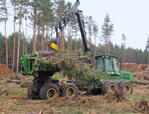
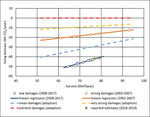


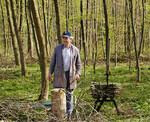

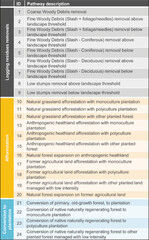

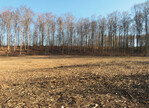


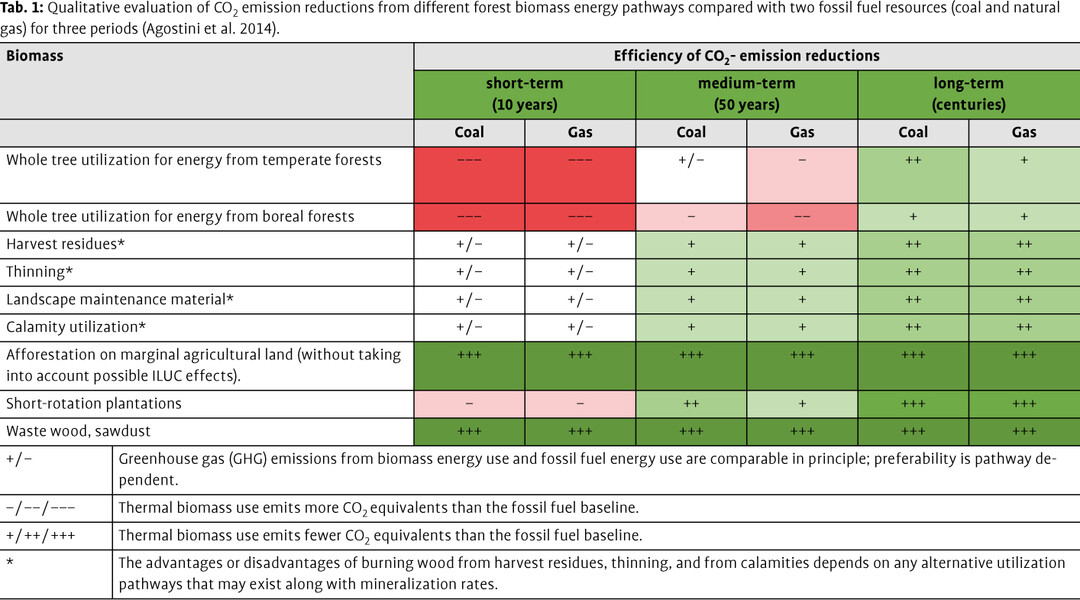



Zu diesem Artikel liegen noch keine Kommentare vor.
Artikel kommentierenSchreiben Sie den ersten Kommentar.